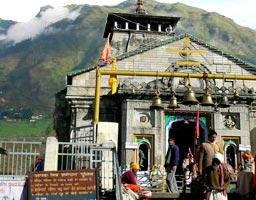The Corbett National Park is located in Uttarakhand,
at the foothills of the mighty Himalayas. It is spread over the
districts of Garhwal and Nainital. It covers an area of 521 sq.kms. Out
of this, 312 sq.kms. falls under the Garhwal district.
The Corbett National Park was established in the year 1936 and is one
of the oldest National Parks in the whole of Indian subcontinent. It is
named after the naturalist and hunter Jim Corbett who was pivotal in the
establishment of the park. The Corbett National Park was first
established as the Hailey National Park. It is a protected area for the
endangered species of the Bengal tiger.
A total of over 585 species of resident and migratory birds and more
than 488 species of plants can be seen in the park. Tree density inside
the park consists mainly of Sal forests and basal trees. There are many
migratory birds that can be found here, like the crested serpent eagle,
blossom headed parakeet and the red jungle fowl. There are over 33
species of reptiles, 7 species of amphibians, 7 species of fish and 37
species of dragonflies that have been recorded in the park.
Hunting is strictly prohibited in the park, but it does permit cutting
down of timber for domestic purposes. The park fared very well during
the 1930s under the elected administration during that time. During
1974, Project Tiger was launched which is a wildlife conservation
project. The Corbett National Park is also one of the 13 protected areas
that are covered under the World Wildlife Fund. The Project Tiger's main
aim is to protect the species of tiger, the Asian Elephant and the great
one-horned Rhinoceros.



